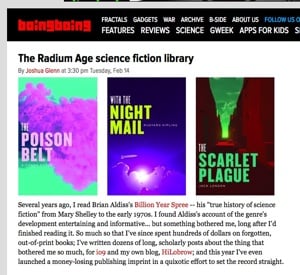Radium Age cover-up?
By:
February 15, 2012
Many thanks to Boing Boing, for publishing my Valentine to Radium Age science fiction yesterday. Here’s a slightly edited version.
What is Radium Age Science Fiction?
Several years ago, I read Brian Aldiss’s Billion Year Spree — his “true history of science fiction” from Mary Shelley to the early 1970s. I found Aldiss’s account of the genre’s development entertaining and informative… but something bothered me, long after I’d finished reading it. So much so that I’ve since spent hundreds of dollars on forgotten, out-of-print books; I’ve written dozens of long, scholarly posts about the thing that bothered me so much, for io9 and my own blog, HiLobrow; and this year I’ve even launched a money-losing publishing imprint in a quixotic effort to set the record straight.
Aldiss’s book is terrific on the topic of science fiction from Frankenstein through the “scientific romances” of Verne, Poe, and Wells — and also terrific on science fiction’s so-called Golden Age, the start of which he, like every other sf exegete, dates to John W. Campbell’s 1937 assumption of the editorship of the pulp magazine Astounding. However, regarding science fiction published between the beginning of the Golden Age and the end of the Verne-Poe-Wells “scientific romance” era, Aldiss (who rightly laments that Wells’s 20th century fiction after, perhaps, 1904’s The Food of the Gods, fails to recapture “that darkly beautiful quality of imagination, or that instinctive-seeming unity of construction, which lives in his early novels”) has very little to say. “Hm,” I thought, when I noticed that. “That’s an awfully long stretch of science fiction history to overlook, isn’t it?”
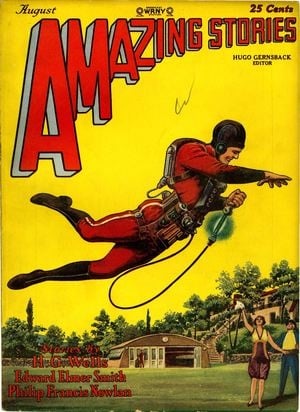
Aldiss seems to feel that authors of science fiction after Wells and before the Golden Age weren’t very talented. He doesn’t think much, for example, of the literary skills of Hugo Gernsback (sometimes called the “Father of Science Fiction”) who founded Amazing Stories in 1926 and coined the phrase “science fiction” while he was at it. True, Gernsback’s ideas were advanced, while his story-telling abilities were primitive. But does that really justify skipping over the 1900s through the mid-1930s? (PS: By my reckoning, Campbell and his cohort first began to develop their literate, analytical, socially conscious science fiction in reaction to the 1934 advent of the campy Flash Gordon comic strip, not to mention Hollywood’s innumerable mid-1930s Bug-Eyed Monster-heavy “sci-fi” blockbusters that sought to ape the success of 1933’s King Kong. They were also no doubt influenced by the 1932 publication of Aldous Huxley’s Brave New World. In other words, the Golden Age began before 1937; if I had to choose a year, I’d say 1934.) Is Aldiss’s animus against that era due solely to style and quality? I suspect not. Billion Year Spree reminds me of one of those airbrushed Soviet-era photos from which an embarrassing historical fact has been excised.
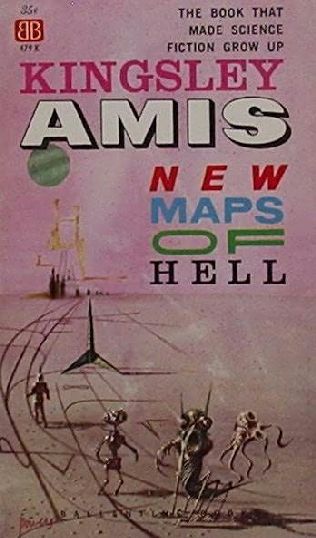
I read several other histories of science fiction, and looked at sf timelines, and discovered that Aldiss was hardly alone in sweeping pre-Golden Age science fiction under the rug. During the so-called Golden Age, which was given that moniker not after the fact, but at the time, as a way of signifying the end of science fiction’s post-Wells Dark Age, Campbellians took pains to distinguish their own science fiction from everything that had been published in the genre, with the sole exception of Brave New World, since 1904. In his influential 1958 critique, New Maps of Hell, for example, Kingsley Amis noted that mature science fiction first established itself in the mid-1930s, “separating with a slowly increasing decisiveness from [immature] fantasy and space-opera.” And in his introduction to a 1974 collection, Before the Golden Age, editor Isaac Asimov condescendingly notes that although it certainly possessed an exuberant vigor, the pre-Golden Age science fiction he grew up reading “seems, to anyone who has experienced the Campbell Revolution, to be clumsy, primitive, naive.”
We should be suspicious of this Cold War-era rhetoric of maturity! I’m reminded of Reinhold Niebuhr’s pronunciamento, at a 1952 Partisan Review symposium, that the widespread utopianism of the early 20th century ought to be regarded as “an adolescent embarrassment.” Perhaps Golden Age science fiction’s brightest lights — Asimov, Robert Heinlein, Andre Norton, Clifford D. Simak, C.L. Moore, Ray Bradbury, Frederik Pohl, and so forth — were regarded as an improvement on their predecessors because in their stories utopian visions and schemes were treated with skepticism and cynicism. Brilliant anti-utopians like Niebuhr, Isaiah Berlin, Hannah Arendt, and Karl Popper were right to point out that pre-Cold War utopian narratives often demonstrated a naive and perhaps proto-totalitarian eagerness to force square pegs into round holes via thought control and coercion. However, I agree with those who argue that the intellectual abandonment of utopianism since the late 1930s has sapped our political options, and left us all in the helpless position of passive accomplices.
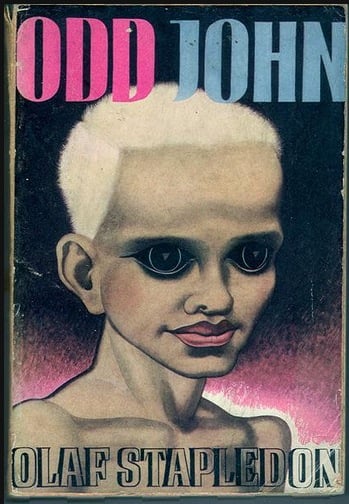
So did so-called Golden Age science fiction actually succeed a Dark Age for science fiction? I don’t think so. Golden Age science fiction authors and propagandists grew up reading science fiction from the 1904-33 era; it’s from that era, as I’ve discovered in my own reading, that we have inherited such enduring science fiction tropes as the superman, the eco-catastrophe, robots, and the telepath! Sure, some 1904-33 science fiction — Gernsback, Edgar Rice Burroughs, and E.E. “Doc” Smith, for example — is indeed fantastical and primitive (though it’s still fun to read today). But many other European and American science fiction authors of that period — including Olaf Stapledon, William Hope Hodgson, Karel Čapek, Charlotte Perkins Gilman, and Yevgeny Zamyatin — gave us science fiction that was literate, analytical, socially conscious… and also utopian. Whatever their politics, Radium Age authors found in science fiction a fitting vehicle to express their faith, or at least their hope, that another world is possible. That worldview may have seemed embarrassingly adolescent from the late 1930s until, say, the fall of the Berlin Wall. But today it’s an inspiring vision.
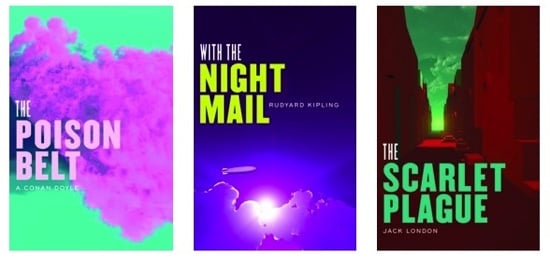
Since I read Billion Year Spree, I’ve tracked down and read scores of science fiction novels and stories from 1904-33. I’ve concluded that it’s an era of which science fiction historians and fans ought to be proud, not ashamed! I’ve dubbed this unfairly overlooked era science fiction’s “Radium Age” because the phenomenon of radioactivity — the 1903 discovery that matter is neither solid nor still and is, at least in part, a state of energy, constantly in movement — is a fitting metaphor for the first decades of the 20th century, during which old scientific, religious, political, and social certainties were shattered. I’m on a crusade to redeem this era’s reputation; in addition to the awareness-raising efforts mentioned above, I’ve pointed readers in the direction of Bison Books and other publishers who’ve reissued Radium Age sf titles. And now I’ve enlisted two visionary bookfuturists (my HiLobrow colleague Matthew Battles, and publisher Richard Nash) and we’ve started HiLoBooks. We’ll serialize (at HILOBROW) and then publish in paperback form some of our favorite Radium Age science fiction titles. The first three — Jack London’s The Scarlet Plague, Rudyard Kipling’s With the Night Mail, and Arthur Conan Doyle’s The Poison Belt — are coming out this spring; they are available for pre-ordering now.
Join the crusade!
MORE RADIUM AGE SCI FI ON HILOBROW: HiLoBooks homepage! | What is Radium Age science fiction? |Radium Age 100: 100 Best Science Fiction Novels from 1904–33 | Radium Age Supermen | Radium Age Robots | Radium Age Apocalypses | Radium Age Telepaths | Radium Age Eco-Catastrophes | Radium Age Cover Art (1) | SF’s Best Year Ever: 1912 | Radium Age Science Fiction Poetry | Enter Highbrowism | Bathybius! Primordial ooze in Radium Age sf | War and Peace Games (H.G. Wells’s training manuals for supermen) | Radium Age: Context series | J.D. Beresford | Algernon Blackwood | Edgar Rice Burroughs | Karel Čapek | Buster Crabbe | August Derleth | Arthur Conan Doyle | Hugo Gernsback | Charlotte Perkins Gilman | Cicely Hamilton | Hermann Hesse | William Hope Hodgson | Aldous Huxley | Inez Haynes Irwin | Alfred Jarry | Jack Kirby (Radium Age sf’s influence on) | Murray Leinster | Gustave Le Rouge | Gaston Leroux | David Lindsay | Jack London | H.P. Lovecraft | A. Merritt | Maureen O’Sullivan | Sax Rohmer | Paul Scheerbart | Upton Sinclair | Clark Ashton Smith | E.E. “Doc” Smith | Olaf Stapledon | John Taine | H.G. Wells | Jack Williamson | Stanisław Ignacy Witkiewicz | S. Fowler Wright | Philip Gordon Wylie | Yevgeny Zamyatin
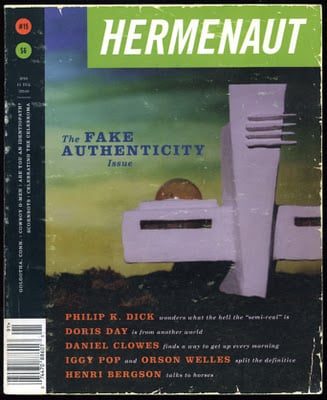
Each of HiLoBooks’ Radium Age titles boasts original cover art by Michael Lewy; and the covers are designed by Tony Leone. Lewy is an artist who subverts PowerPoint, Google Sketchup, Vue, and other corporate software he’s required to use as part of his day job; he is creator of the ongoing multimedia project City of Work, and author of Chart Sensation. NB: Leone and Lewy designed and illustrated the covers of Joshua Glenn’s ’90s zine/journal Hermenaut [above]; HiLoBooks reunited the dream team.

